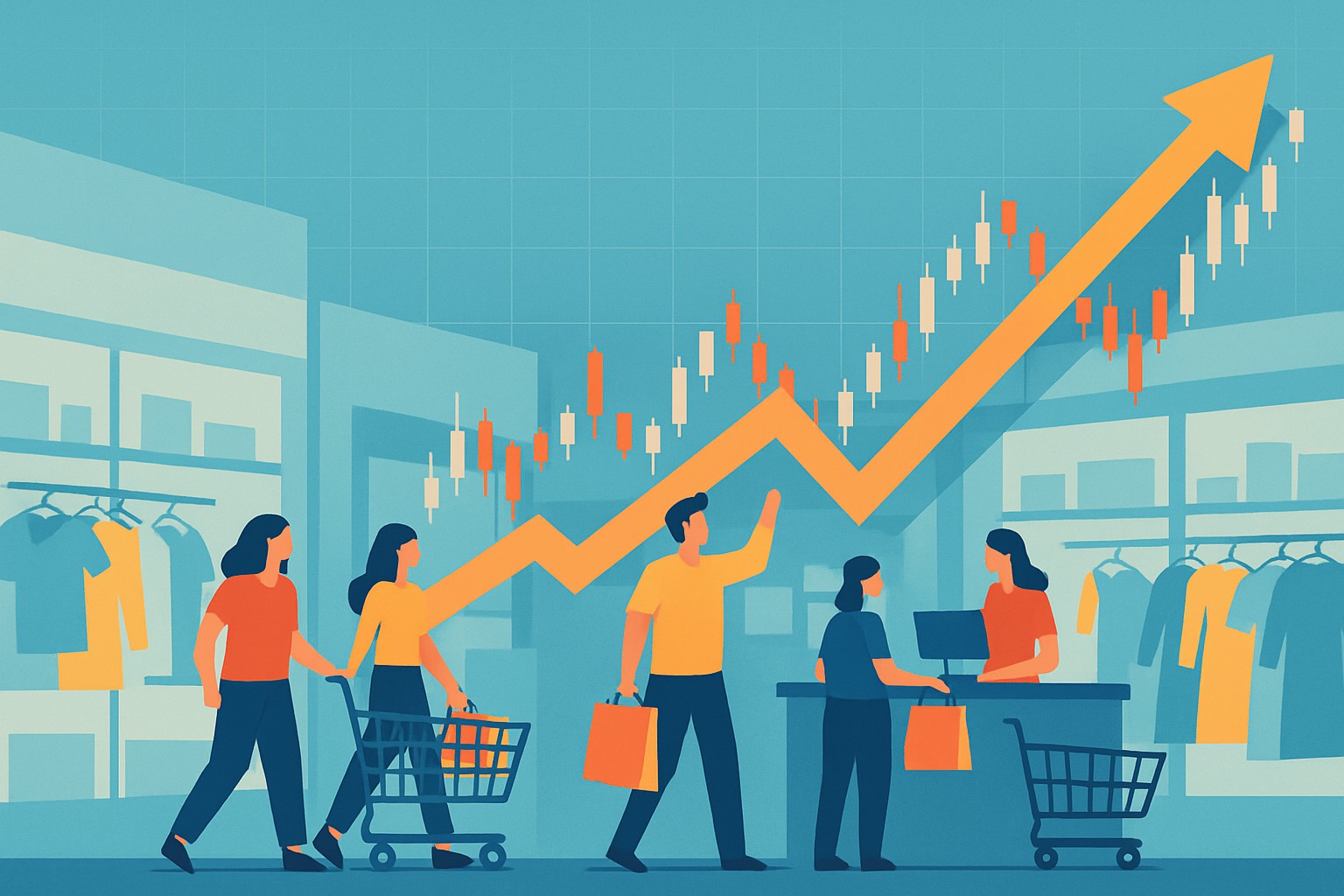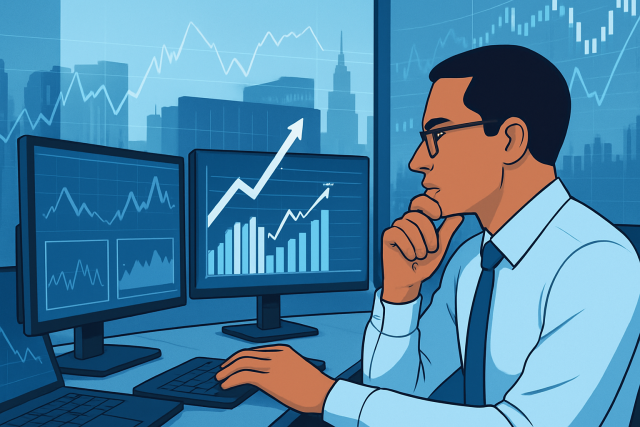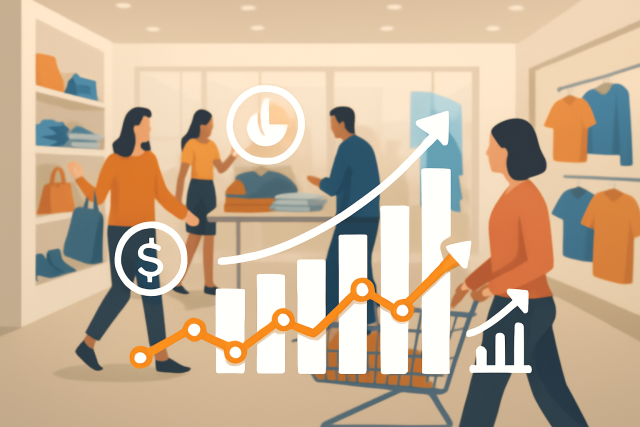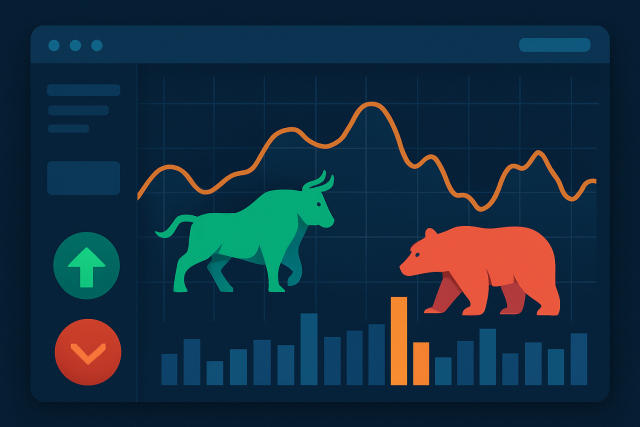
Nonfarm Payrolls Definition Simplified for Beginners
Understand what nonfarm payrolls mean and why this key economic indicator matters. This beginner-fri...

Understanding the retail sales definition is crucial since this key economic indicator is closely watched by traders and analysts. Yet I’ve noticed many people don’t have a firm handle on what "retail sales" actually means, how the data is collected or why it can move the markets.
Retail sales capture the total value of goods that retailers sell directly to consumers over a given period, typically measured month by month. Unlike wholesale sales or manufacturing output that deal with exchanges between businesses or track production volumes, retail sales focus on what final consumers actually buy.
Many individuals often assume retail sales figures paint the complete picture of consumer spending but in reality they leave out services and purchases made outside the typical retail scene. These numbers mostly come from government reports—think U.S. Census Bureau—and industry surveys that pull sales data from various sources.
Sometimes, the process behind gathering and reporting retail sales data feels a bit like trying to catch lightning in a bottle. But rest assured, there is quite a method to the madness. From punchy point-of-sale systems buzzing in stores to the behind-the-scenes data crunching, it all comes together to paint a pretty clear picture of the retail landscape. Stick with me, and you will see how those numbers, which often seem just cold stats, actually tell a lively story about what individuals are buying and when.
Retail sales data mostly originates from government agencies such as the U.S. Census Bureau which rolls it out in their Monthly Retail Trade Report. They pull together info from a thoughtfully selected sample of retail businesses spanning various sectors, then crunch the numbers to paint a broader picture of market trends.
Seasonally adjusted data works like a filter that smooths out predictable ups and downs we see throughout the year and offers a clearer snapshot of what is really going on with retail trends. This tweak is important because raw unadjusted numbers can sometimes lead you astray, swayed by holiday shopping sprees or summer sales that spark short-lived bursts of activity.
Retail sales really hold the spotlight since consumer spending often makes up the lion's share of gross domestic product (GDP) in many countries. When retail sales are firing on all cylinders, it’s usually a sign the economy is in good shape and tends to boost investor confidence. Conversely, if sales start to falter it can be a warning flag for an economic slowdown.
Historical examples clearly show how much retail sales can shake up the market. Take late 2020 for instance—right as the pandemic recovery was kicking into gear, U.S. retail sales unexpectedly soared and the stock market didn’t hesitate to follow with rising gains since investors were betting on stronger corporate earnings. Flip the script to early 2022 and weaker retail sales reports caused the U.S. dollar to slip and stocks to take a hit. This is a reminder of how finely tuned markets are to shifts in consumer spending.
Traders often lean on retail sales data to fine-tune their strategies, carefully timing their trades around when these reports drop and diving deep into the nitty-gritty of sector-specific details. Getting a clear picture of which slices of the retail pie are thriving helps them make smarter, more targeted moves—like zooming in on e-commerce stocks when online sales start to surge.
Keep a sharp eye on the economic calendar so you know exactly when those retail sales reports are dropping. Timing is everything here.
Dive into the actual retail sales figures and compare them with what analysts predicted because that’s where you’ll find any sneaky surprises.
Check both month-over-month and year-over-year changes to get a good sense of short-term blips and longer-term trends.
Pay attention to how markets react right after the news hits the airwaves to really gauge the mood and momentum. It can reveal a lot about where things might head next.
Combine the retail sales data with other big-picture indicators like inflation and consumer confidence to understand the full story, not just isolated headlines.
Short-term traders are often the first to jump on sudden price swings that pop up when retail sales reports catch the market off guard. They move fast and make quick trades to ride these immediate waves. Meanwhile, long-term investors usually take a step back and use retail sales trends to confirm the bigger economic picture. This helps them steer their portfolios over months or years. Tools like TradingView come in clutch with user-friendly charts and technical analysis features that make it easier for traders to see how retail sales shape the market’s moves.
Many traders often trip up when trying to make sense of retail sales data, sometimes overreacting to a single month’s ups or downs without stepping back to see the whole forest rather than just the trees. Forgetting about seasonal adjustments or not really grasping which parts of the economy the numbers actually reflect can easily steer people toward conclusions that miss the mark on the true economic picture.
Just looking at monthly retail sales alone can sometimes feel like trying to appreciate a painting by staring at a single brushstroke. The real insight comes from stepping back and taking in those broader trends and seasonal twists—they paint a much clearer picture of the overall economic landscape, in my experience.
Beyond the headline retail sales numbers traders tend to keep a close eye on finer details like retail sales excluding volatile automobile figures or sales broken down into categories such as apparel or electronics. Additional indicators like consumer confidence, personal income and inflation figures come into play and paint a fuller picture of the economy.
| Indicator Name | Description | Relationship to Retail Sales | Trading Relevance |
|---|---|---|---|
| Retail Sales Ex-Autos | Retail sales data that leaves out automobile purchases. | Gives a clearer picture by cutting out the wild swings caused by auto sales. | Handy for spotting trends in the broader consumer goods market without the noise. |
| Durable Goods Sales | Sales figures for long-lasting products like appliances. | Often a good barometer of how confident individuals feel about splurging on big-ticket items. | A key signal for how strong or shaky consumer demand might be. |
| Consumer Confidence Index | Measures consumer optimism about the economy. | Shapes expectations around future retail sales, though it doesn’t show actual sales numbers. | Influences trader mood and market jitters ahead of official sales reports. |
| Personal Consumption Expenditure | Captures total consumer spending on goods and services. | Includes services that retail sales tend to overlook, providing a more complete snapshot. | Acts as a solid sidekick to retail sales in economic analysis. |
| Consumer Price Index (CPI) | Monitors changes in prices consumers pay, tracking inflation. | Helps separate real growth from mere price hikes in sales figures. | Essential to grasping changes in purchasing power and fine-tuning trading strategies. |
When traders understand the retail sales definition and blend this data with other economic indicators, they often get a clearer snapshot of the economy. For example, if retail sales climb alongside stronger consumer confidence and steady inflation it’s usually a solid sign the economy is in good shape. Tools like TradingView back this up by providing slick charts that layer various data sets.
Struggling to improve your trading performance? Edgewonk's advanced analytics tools are designed to give you the edge you need.
With detailed trade journaling, robust strategy analysis, and psychological insights, you'll gain a comprehensive understanding of your strengths and weaknesses. Don't miss out on this game-changing opportunity.
Traders, it's time to elevate your game. Edgewonk is the ultimate trading journal software designed to empower you with data-driven insights and personalized strategies. Take control of your trading journey and maximize your potential.
23 articles published
Transforming the field of commodities trading through sustainable investing principles, she bridges traditional finance with ESG considerations.
Read Posts
Understand what nonfarm payrolls mean and why this key economic indicator matters. This beginner-fri...

The Non Farm Payroll report is a key economic indicator shaping trading strategies worldwide. This a...

Retail sales data reveals crucial insights into consumer spending and economic health. This article...

Learn how the CBOE Put Call Ratio serves as a powerful indicator of market sentiment, helping invest...
